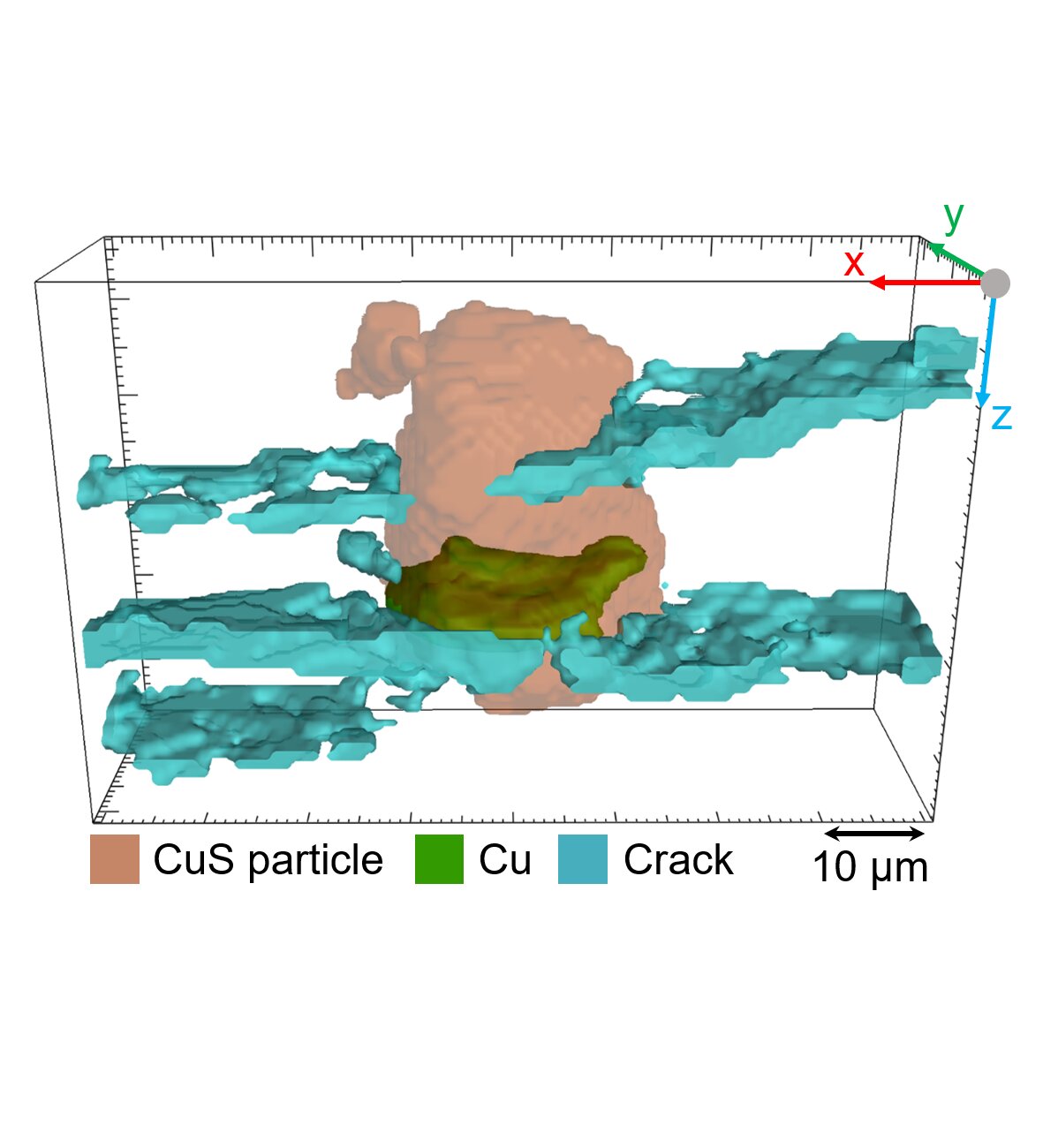Tomography shows high potential of copper sulfide solid-state batteries
Solid-state batteries (SSBs) are currently regarded as a promising battery technology of the future. Compared to the current lithium-ion batteries, which are used in mobile phones, laptops and electric vehicles, SSBs could achieve even higher energy densities and better safety. In addition to research institutes, all major automotive companies are therefore also researching this technology.
The main feature of the technology is that the highly flammable liquid electrolytes of lithium-ion batteries are replaced by a solid. The entire battery is therefore consists of only “solid materials,” hence the name solid-state battery. In order to produce such a battery, different materials (anode, cathode and electrolyte) must be pressed together under high pressure.
Researchers from the Helmholtz-Zentrum Berlin and Hereon, Humboldt-Universität zu Berlin and the Federal Institute for Materials Research and Testing have now succeeded in observing the processes within such a solid-state battery during charging and discharging. The team led by Prof. Philipp Adelhelm and Dr. Ingo Manke investigated the behavior of copper sulfide, a naturally occurring mineral, as a cathode in a solid-state battery. Lithium was used as anode. A special feature of the battery is that large copper crystallites form during discharge.
The formation of large crystallites enables a detailed investigation of the reaction by means of X-ray tomography. Thus, the (dis)charge reaction could be traced in 3D and for the first time the movement of the cathode particles within the battery could be tracked. In addition, it was shown that cracking can be effectively reduced by higher pressure.
“For the complex measurements, we had to make some compromises and carry out many reference experiments,” explains Dr. Zhenggang Zhang and Dr. Kang Dong, the joint first authors of the publication. “However, the results provide detailed insights into the inner workings of a solid-state battery and show how its properties can be improved.”
The research was published in Advanced Energy Materials.
Zhenggang Zhang et al, Phase Transformation and Microstructural Evolution of CuS Electrodes in Solid‐State Batteries Probed by In Situ 3D X‐Ray Tomography, Advanced Energy Materials (2022). DOI: 10.1002/aenm.202203143
Citation:
Tomography shows high potential of copper sulfide solid-state batteries (2022, November 28)
retrieved 28 November 2022
from https://techxplore.com/news/2022-11-tomography-high-potential-copper-sulfide.html
This document is subject to copyright. Apart from any fair dealing for the purpose of private study or research, no
part may be reproduced without the written permission. The content is provided for information purposes only.
For all the latest Technology News Click Here
For the latest news and updates, follow us on Google News.

